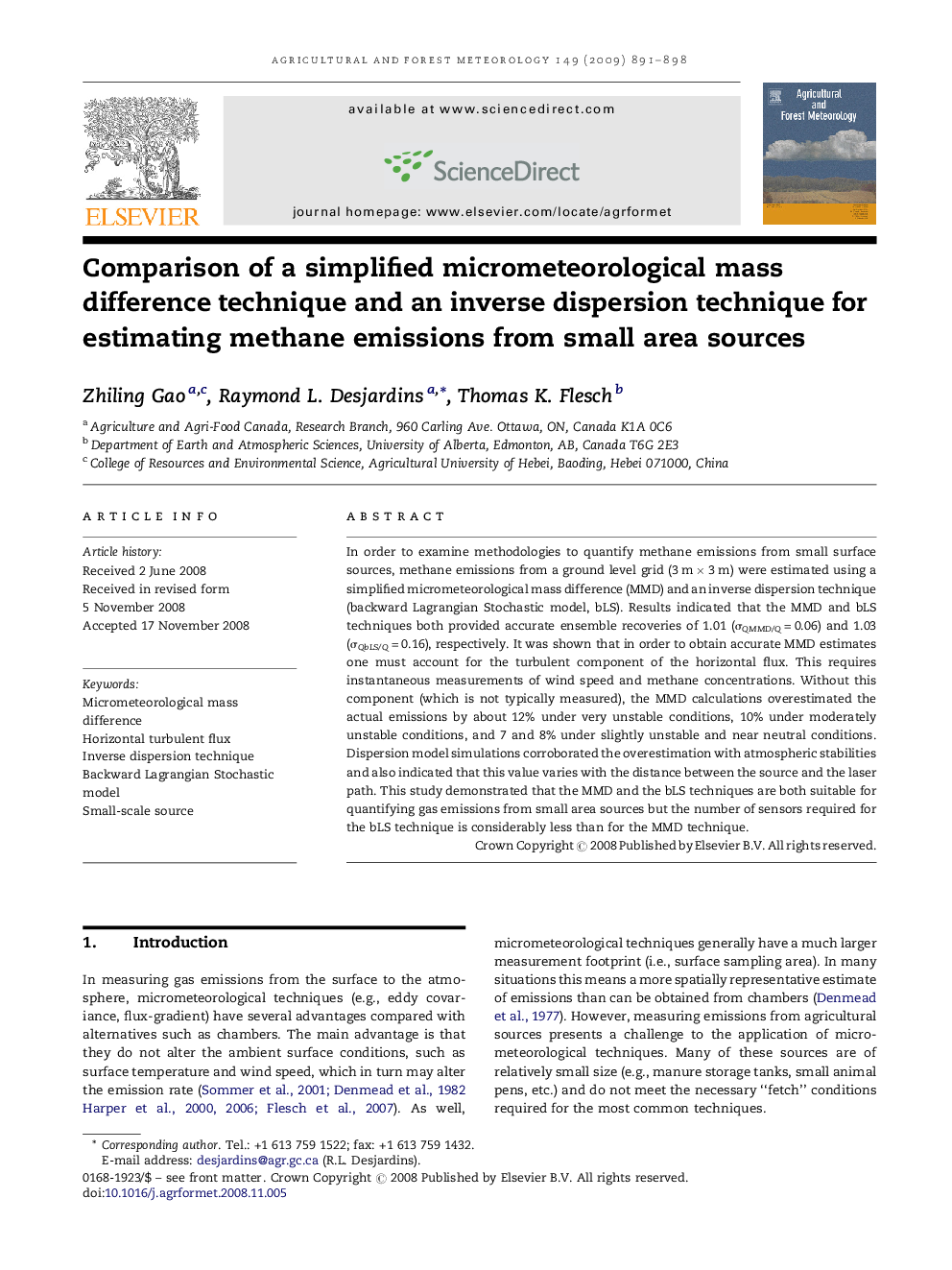| Article ID | Journal | Published Year | Pages | File Type |
|---|---|---|---|---|
| 82708 | Agricultural and Forest Meteorology | 2009 | 8 Pages |
In order to examine methodologies to quantify methane emissions from small surface sources, methane emissions from a ground level grid (3 m × 3 m) were estimated using a simplified micrometeorological mass difference (MMD) and an inverse dispersion technique (backward Lagrangian Stochastic model, bLS). Results indicated that the MMD and bLS techniques both provided accurate ensemble recoveries of 1.01 (σQMMD/Q = 0.06) and 1.03 (σQbLS/Q = 0.16), respectively. It was shown that in order to obtain accurate MMD estimates one must account for the turbulent component of the horizontal flux. This requires instantaneous measurements of wind speed and methane concentrations. Without this component (which is not typically measured), the MMD calculations overestimated the actual emissions by about 12% under very unstable conditions, 10% under moderately unstable conditions, and 7 and 8% under slightly unstable and near neutral conditions. Dispersion model simulations corroborated the overestimation with atmospheric stabilities and also indicated that this value varies with the distance between the source and the laser path. This study demonstrated that the MMD and the bLS techniques are both suitable for quantifying gas emissions from small area sources but the number of sensors required for the bLS technique is considerably less than for the MMD technique.
